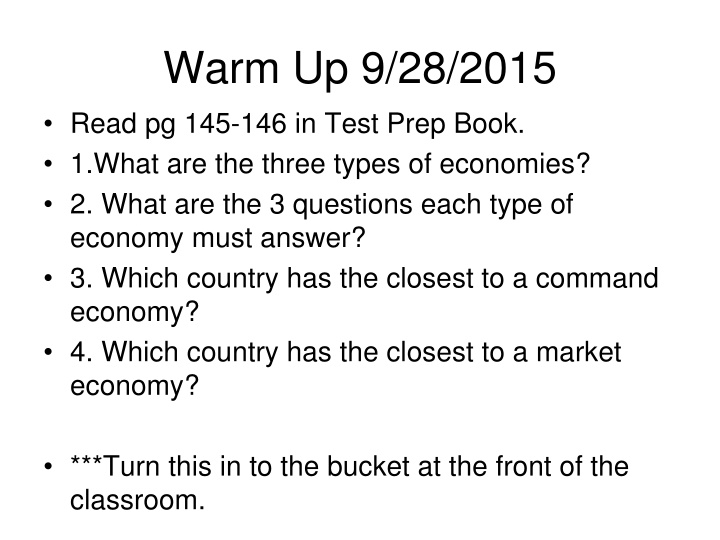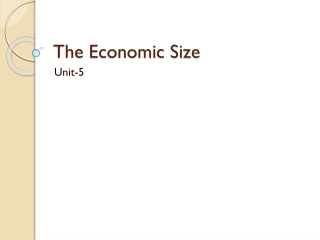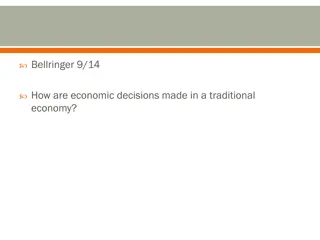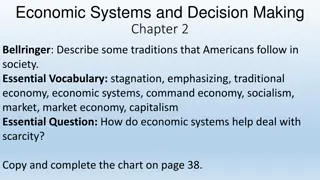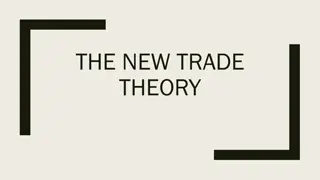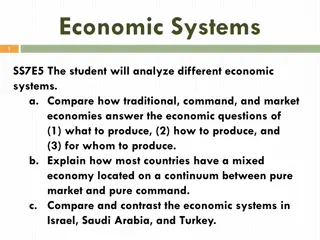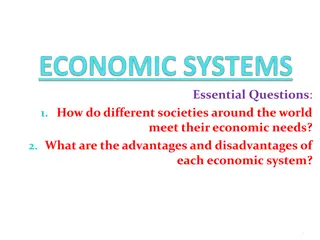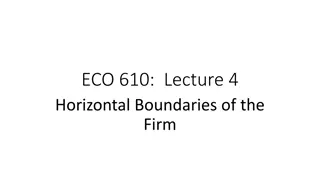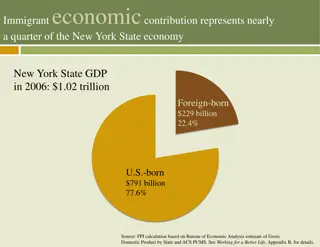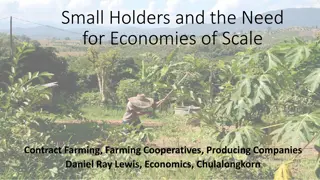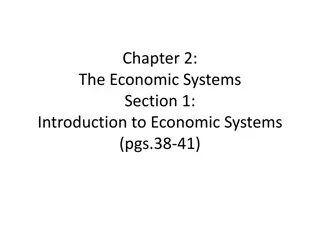Types of Economies and Their Questions
Understanding the three types of economies - market, command, and mixed - and the key questions each type must address. Explore the characteristics of market economies, command economies, and how they differ in production, resource allocation, and distribution. Learn about the economic systems of different countries and their implications for society.
Download Presentation

Please find below an Image/Link to download the presentation.
The content on the website is provided AS IS for your information and personal use only. It may not be sold, licensed, or shared on other websites without obtaining consent from the author.If you encounter any issues during the download, it is possible that the publisher has removed the file from their server.
You are allowed to download the files provided on this website for personal or commercial use, subject to the condition that they are used lawfully. All files are the property of their respective owners.
The content on the website is provided AS IS for your information and personal use only. It may not be sold, licensed, or shared on other websites without obtaining consent from the author.
E N D
Presentation Transcript
Warm Up 9/28/2015 Read pg 145-146 in Test Prep Book. 1.What are the three types of economies? 2. What are the 3 questions each type of economy must answer? 3. Which country has the closest to a command economy? 4. Which country has the closest to a market economy? ***Turn this in to the bucket at the front of the classroom.
ECONOMIES OF THE WORLD! and the questions they each have to answer. Intro to Econom ics
Question one! What should we produce? Food? Clothing? Shelter? Entertainment items/services? Healthcare? Education?
Question two! How do we produce it? By hand? In factories? Small businesses? Big businesses? Do adults make the products? Do children make the products?
Question three! Who are we producing it for? Everyone? Only the rich people? Only the poor people? Only for certain groups?
Market Economy Question one! What should we produce? Whatever people will buy.
Market Economy Question two! How do we produce it? Whatever way is cheapest!
Market Economy Question three! Who are we producing it for? Whoever will buy it If no one will buy it, we won t produce it (supply & demand)
Command Economy Question one! What should we produce? What the government thinks people will need
Command Economy Question two! How do we produce it? By assigning jobs to the citizens By using whatever capital resources available (including older factories and machines)
Command Economy Question three! Who are we producing it for? We are producing it for every citizen, so everyone can have an equal amount
Public vs. Private Businesses Public Public Private Private Businesses owned by the government. Examples: Court houses, schools, post office, fire stations, police stations. Privately owned businesses. Entrepreneurs NOT government operated. Examples: retail stores, grocery stores (Wal-Mart, Target, Publix)
Traditional Economy Question one! What should we produce? The basics! The most basic things necessary to live.
Traditional Economy Question two! How do we produce it? Mostly by hand or using basic tools.
Traditional Economy Question three! Who are we producing it for? Ourselves, our families, or to barter if we have too much
Warm-Up 10/17/2016 Write in your agenda. 1st Period: Government Quiz 2, 3, & 4: Explain each of the four different types of economies (traditional, command, market, mixed)
What is the difference between commercial and subsistence farming? Commercial Farming Commercial Farming Growing enough food to feed large populations. *Think: Commercials on TV sell to large amounts of people.* Su Subsistence Farming bsistence Farming Survival Farming; enough for themselves or their families.
Entrepreneur The person responsible for bringing the human, capital, and natural resources together to start a business. Human Resources Human Resources (Capital) (Capital): Workers with knowledge, skills, and experience to make goods and provide services. (Examples: Teachers, Cashiers) Capital Resources Capital Resources: Machines, factories, supplies (Examples: cash register, oven) Natural Resources Natural Resources: : Raw materials to make goods-found in nature, such as: land, water, forests, minerals, soil. (Example: tree, fruit)
Economics Goods: Products(footballs, make-up, iPods, computers) Services: An action performed for money (example- doctor, hairdresser) Consumer: Person who buys and uses goods and services. Producer: Person who makes or provides services.
Specialization vs. Diversification Specialization Specialization Diversification Diversification
